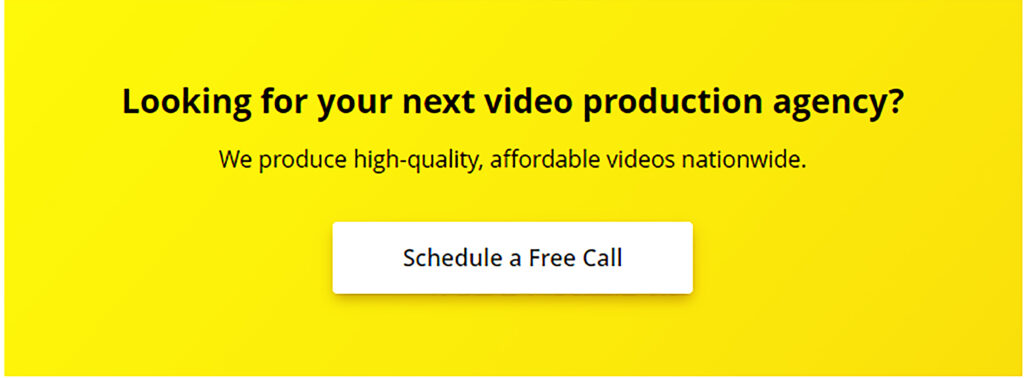
- How to leverage on video marketing for business
- 1. Center Your Video Around the Story, Not the Sale
- 2. Define Your Video Marketing Goals
- 3. What Kind of Video Should I Create?
- 5 Most Popular Types of Videos
- 4. What Style of Video Should I Create?
- 5. How Do I Distribute My Video?
- Which type of distribution is best for me?
To begin with our topic of the day what is video marketing?
Video marketing is the production of engaging videos around a marketing strategy that delivers business results. The perfect blend of storytelling and promotion that maximizes your marketing funds.
Video and marketing go together like peanut butter and jelly.
From traditional television commercials in the 1960s to today’s YouTube, Snapchat, Vimeo, and even Facebook Live, it’s no secret that video has become a staple of our everyday lives.
While convenient and efficient for the consumer, video marketing provides marketers with an attractive, versatile, and extremely shareable medium to reach their audiences. In case you don’t know In Nigeria, digital video marketing is a $135 billion industry. That means brands everywhere are realizing the value of video and investing in its creation and distribution.
And, because of this growth, you’re now behind if you aren’t releasing branded video content regularly.
How to leverage on video marketing for business
Now that you know what is video marketing and the prospect it holds for your business lets dive into ways you can leverage on video marketing for your business and increase sale.
While going viral should never be the objective of your video marketing campaign (never ever!), the term itself has seemed to have taken off this year, exploded even…
Marketers, we’ve been hearing lots of stats like these: 5 billion videos are watched on YouTube every single day, 1200% more shares are generated by social videos than text and images combined, videos on a landing page increase conversions by 80% and 80% of users recall a video ad they have seen online in the past month.
Eek…Well, if that’s the case then you best get to grips with the best practices for ensuring your video marketing campaigns smash your objectives and propel your social media forward. Below we reveal some of our favorite tips to help you create compelling, inspiring and actionable online videos.
1. Center Your Video Around the Story, Not the Sale
There is a heap of sales clutter on the Internet that is actively annoying and repelling your customers. Don’t let your brand be that guy – instead, your video should be centered around the story and not the sale. Remember: the same rules that apply for written content marketing apply for video marketing – concentrate on the value you’re providing for your customers.
Make the most of the emotive power of video by appealing to your consumers’ needs and hidden desires. Scared you’ll lose leads this way? You can always place a strategic and relevant call to action alongside a tracked URL at the end of your video (just make sure it fits into your overall story).
2. Define Your Video Marketing Goals
In order to know whether you’ve actually achieved what you’ve set out to accomplish with your video marketing strategy, you need to set measurable goals.
Content intelligence platform Conductor recommends defining marketing goals for both revenue and your brand.
Revenue-based goals focus on things like increasing lead form inquiries while brand goals involve things like growing a higher quality email list, driving more blog traffic, or capturing Google answer boxes for targeted keywords.
Brand goals can be just as important as revenue ones because they help position you for future success and often take into account qualitative feedback.
Some common video goals include:
Brand Awareness—typically measured using brand recall and recognition, frequency/quality of mentions, or video views
Demand Generation and Conversion—typically measured by lead count, impact on conversion rate, or influence on sales opportunity and pipeline generation
Viewer Engagement—typically measured by average engagement (also known as the average length of time viewers watched the video)
How to Set S.M.A.R.T. Goals
As with any kind of marketing goal, following the S.M.A.R.T. goal setting framework is a good place to start.
Specific
The goal should zero in on a specific aspect of your strategy. After all, saying you want to get more views is great, but what does it actually mean?
Measurable
The goal should be accompanied by a relevant key performance indicator (KPI) and metrics that can be used to measure its success.
Attainable
The goal should be something that’s within reach of your department without “sandbagging” (deliberately setting a goal that isn’t a challenge for the team to reach). Try starting with a baseline and determining a desired increase (or decrease, as the case may be) from there.
Relevant
The goal should be relevant to your overall business objectives AND a good fit for the types of objectives that video is best suited to meet
Time-Bound
The goal should have a timeframe in which it can reasonably be achieved so that you can accurately measure how effective your efforts have been. While some goals can be tackled in a quarter or two, others may require a longer timeframe, like a year. Go one step further by breaking down your overall goal into weekly targets. That way you know what you need to be doing, every step of the way.
An example of a S.M.A.R.T. video marketing goal—one that is specific, measurable, attainable, relevant, and time-bound—might look like this:
We will increase time on page for key pages on our website by 15% this quarter by embedding relevant videos.
3. What Kind of Video Should I Create?
Once you have your strategy laid out, it’s time to think about the actual video you’re going to create. Easy peasy, right? Well, not exactly…
Every type and every style of video has its own pros and cons. Some types might be better for you depending on your specific marketing goals, others are better if you’re just looking to save some cash long-term.
If you don’t know the difference, you’re not alone. That’s why we’re breaking down some of the most common types and styles of video, so you can get the video creation process started!
5 Most Popular Types of Videos
From brand videos to FAQs to instructional videos and more, there are almost countless types of videos you can make in conjunction with your marketing funnel.
Despite there being so many, certain types of videos are better suited to meet your marketing goals. Once you’ve got your goals strategized, you can start learning about how each video type differs and pick the ones that’s right for you.
- COMMERCIALS
Commercials are brief, attention-grabbing videos that highlight your company’s best features with a dynamic scene, beautiful imagery, or summary of exciting features, and end with a clear call to action. They’re the most common type of video — you’ve probably watched a ton on TV, streaming services, or video platforms like YouTube. Because their primary goal is to attract new customers, commercials are often broad in appeal and provide only the most important and relevant information a viewer might need.
And, most importantly, they’re memorable! They show off your brand in a way that sticks with the viewer, so if it’s the viewer’s first time being exposed to your brand, they won’t soon forget it.
Commercials are typically short, only 30 seconds to one minute long, and distributed via paid advertising online or on television. They’re also great on your website or homepage, since they provide a general overview of your brand and encapsulate your brand mission in a quick and easily-digestible format.
- SOCIAL CONTENT VIDEOS
Social content videos are short video clips created solely for social media platforms like Facebook, Instagram, Twitter, LinkedIn, and more. These are usually fun, playful, engaging, and designed to be shared. They can include lifestyle shots, a montage of scenes relating to your product or service, short interview sound bites or quotes, or just a beautiful shot of your product.
If you haven’t seen a commercial on TV, then you’ve definitely seen a video on social media. Social videos can be almost anything and usually fall anywhere along the buyer’s journey. Due to their fun, engaging nature and shorter length, they most often help engage potential and current customers.
Try to keep social content videos under 30 seconds. Pay attention to aspects unique to social media, like muted autoplay and video looping; you can actually use these tools to your advantage by playing with silent audio and creating seemingly endless loops. Also take advantage of highlighting positive customer feedback in your social videos — this increases your credibility and spreads positive word of mouth.
- EXPLAINER VIDEOS
Explainer videos are videos that teach your audience more about your company, brand, product, or service. Like social content videos, almost any video can be an explainer video, the only requirement is a focus on how your company solves a particular problem.
Explainer videos are excellent introductions to your brand. They should quickly and efficiently explain what your company does and why that matters. Typically, under three minutes, explainers end with a strong call to action and offer a simple solution to a complex problem.
Remember, these videos should always answer three main questions: What’s your audience’s problem? How will your product or service fix it? Why should your audience choose you?
- Product Videos
A product video tells your audience about your best-selling products or services and their top features. It shows your product in action and helps increase consumer confidence in your company or brand.
Here, your main goal will likely be to attract new customers who are in the first stage of product research. You’ll want to show off not only the beauty of your product, but its utility and necessity. You’ll also want to highlight what makes your product better than the rest — since these new visitors are still doing research, you’ll want to make sure your product video sets you apart from your competition.
Product videos are usually about 30 seconds long and can be shared on your website, social media platforms, via email, or through paid advertising. Use high-quality production and great sound, whether it’s music, dialogue, or voice-over, to communicate how amazing your product is.
- TESTIMONIALS
Testimonial videos are one of the strongest types of videos you can make; they show past or current satisfied customers talking about their positive experience using your product or service.
Honest personal feedback from a customer is stronger than anything you could say about your own company. According to a recent survey, 90 percent of consumers say their buying decisions are influenced by online reviews, so use these reviews to increase your brand credibility and convince your prospects to take the plunge.
Customer testimonials are usually between 30 seconds and two minutes long and can focus on one happy customer or numerous. These videos are highly versatile, meaning you can publish them almost anywhere. You’ll just want to make sure whoever you film is wholly authentic — a forced or fake-feeling testimonial could be more detrimental to your brand, so take some time to find the perfect person.
4. What Style of Video Should I Create?
Picking the right video type is crucial to your video’s success, but so is picking the right video style. Style is a broader term that relates to your video’s tone and messaging. It affects how your actual story is told — are you using actors? Graphics? Dialogue? Specific locations? Together, these elements create your video’s style. Pick the right style and you’ll draw in the audience that’s most likely to convert.
- LIFESTYLE
A lifestyle video is any video that appeals directly to your target demographic, helping them visualize how your product or service fits into their way of life. Beautiful visuals, actions shots, and stunning imagery should set the mood and epitomize the lifestyle you want to associate with your product.
This means working to create a specific look or style for your video. If your product is modern and sleek, you’ll want a video with sleek, minimal design, plain backgrounds, and modern accessories. If your product serves a young, high-tech demographic, you’ll want your video to showcase tech culture, young, smart actors, and functional utility. Think of your brand aesthetic and make sure your video follows that aesthetic.
Lifestyle videos usually range between 30 seconds and two minutes, and feature locations that best highlight your product’s exemplary features.
- MINI-DOC
Mini-documentaries are less about your brand’s visual aesthetics and focus more on expressing your company’s core value or mission statement in a documentary-style format. This is usually accomplished through interviews with key company representatives, like founders, employees, or satisfied customers.
To make a big impression, it’s important your mini-doc keeps it short and sweet. You want to highlight excellent sound bites that tell viewers exactly who you are, all while maintaining their attention. While feature-length documentaries have enough time to develop a full, three-act story, mini-docs don’t. They have to establish their story by quickly answering three crucial questions: what, why, and how. What is the focus of this video? Why should the viewer care about this? How does your subject work? This helps you get key pieces of information to your audience in a fun and interesting way.
We recommend keeping mini-docs to under a minute, though they can be a little bit longer. Unfortunately, viewer attention span drops dramatically after the minute-mark, so try to tell your story as best you can in the time you have.
- NARRATIVE
Narrative videos are probably the most recognizable style of video besides animation. They use classic storytelling elements, including character building, conflict, and resolution, to tell your brand story in an entertaining and engaging way. They create a journey — one your viewer can easily follow and relate to.
Because their goal is to tell a story, narrative videos often work best top of funnel, when users are just learning about the problem they face and you’re introducing your brand. Whether you tell the story of how your company came to be, the story of a frustrated customer finding you for the first time, or the story of a fictional hero character, your narrative should be memorable and help your brand stay on the mind of anyone who watches it.
Remember, watching should be a fun experience, so make sure you have fun writing, producing, and sharing your video. Use heavy branding and remember your company’s mission as you create it, otherwise the story can start to get away from you.
- Animation
Animated videos have the power to engage and captivate your audience like no other. Animation is an interesting style because it can be used independently of the content in your video; almost any type of video can be made in the style of animation. But animation is especially powerful when it comes to explaining difficult-to-understand concepts or technology.
It’s also great for combining with other styles. You can have a lifestyle video that uses animated graphics or animated cutaways, or you can use it entirely on its own. It’s wonderfully versatile and spices up almost any video you create.
Keep in mind that animation can be less costly to create (no equipment, less time on set, etc.) but can take much longer because of the technical skill per frame that it requires. Keep a pros and cons list handy before deciding whether animation is right for you.
What Are the Three Stages of Video Production?
Now you’re ready for the big show. Your video strategy is set, you know what video goals you want to accomplish, and you know exactly the type and style of video that’ll help you get there. You’re ready to start the fun stuff!
5. How Do I Distribute My Video?
You’ve got your amazing video and your entire team loves it. Now what? How do you actually get people watching it and sharing it? Well, that all comes down to distribution!
Distributing your video on the right channels is essential for your video’s success. Owned, paid, and earned distribution channels each have their own pros and cons, but using the right balance of them all can propel your video to new heights, spreading your brand awareness and converting users at every stage of the marketing funnel.
Let’s take a look at each of these in a little more detail.
- OWNED
Publishing your video across all your owned channels is probably the easiest way to distribute your video, and the one method that cannot be ignored. It includes every channel you own, like your website, PDFs, digital documents, email lists, ecommerce pages, apps, and more. These channels are the primary sources of information about your company and brand, so use every single one you can intelligently and with purpose.
Here are some of the owned distribution channels you should use for your video.
WEBSITE
From your homepage to your ecommerce pages, put your video on as many pages as possible on your website; this will help not only drive more visitors to your site, but engage them once they’re there. If you have more than one video, even better! This is the first place you’ll want to start gathering video views — and probably the most impactful of all the views you’ll get.
BLOG
No matter what your video is about, publishing it on your blog is a must. Home to informative, educational content, as well as more brand-specific marketing content, visitors will expect your blog to host any and all relevant product news you have to share. Better yet, if someone is browsing your blog, they’re ready to commit time to your content. What better way to engage them than video?
Email is an easy way to reach those who’ve already interacted with your brand or given you their contact information. A direct line of communication, you can embed your video in any newsletter, email sequence, automated email, or promotional email.
SOCIAL MEDIA (ORGANIC)
Social algorithms are increasingly prioritizing video content, so you’ll want to make sure you’re promoting your video numerous times on all your social media channels, including Facebook, Instagram, Twitter, LinkedIn, and more. Video generates 1,200 percent more shares than links and images combined, so this is a required (and easy) place to promote your video and reach a large audience.
Because you own these channels, there should be no issue using them to distribute your video. With a simple website update or email blast, your video can be in front of more people, telling your brand story to those who most want to hear it.
Get started today!
Let the experts help you with video production at a price you can afford.
Schedule a Free Creative Call
- PAID
Even a small advertising budget can pay off big.
Paid distribution, or paying money for the distribution of your video via advertising, has become almost essential to the successful marketing of any video. Because most sites don’t charge for the use of their services (think Facebook or content sites like Buzzfeed), charging for distribution has become their one way of earning money — meaning video creators like you sometimes have to pay more to get your content seen by a wider audience.
But that’s OK! Even a small advertising budget can pay off big, and with the right balance of paid and non-paid distribution, your video can reach exactly the right people.
Here are a few paid distribution methods you should take full advantage of.
SEARCH ADS
Search ads aren’t video-friendly just yet, but you can target high-volume keywords related to your product, service, or brand and create a landing page for your video content. Whether your goal is to educate about a certain topic or introduce your product, you can drive these high-traffic keywords to your page for a low cost per click and get huge returns.
SOCIAL MEDIA (PAID)
Just like organic posts, paid social media posts can spread your content far. Paid posts, however, allow you to target the exact type of person you want watching your ads. Organic posting is only shown to your immediate fans, but with paid advertising, your content can target all sorts of demographics, locations, income levels, interests, and beyond — ensuring only the people most likely to purchase from you actually see your ad.
NATIVE ADVERTISING
Native advertising embeds your video content onto a third-party website in a natural way that doesn’t disrupt the user’s experience. For instance, if you own a bakery and created a commercial about all the different types of cakes you sell, your video might be naturally embedded on a food website in an article about baking. This advertising is slightly more expensive than social or search ads, but have high returns thanks to the relevance of the content.
SPONSORED CONTENT
This is any form of content which was paid for, usually by a company promoting another company or brand. It is written in the style of the site publishing it, much like native advertising, but isn’t actually an ad — it’s a valuable piece of written or visual content meant to inform the viewer. Usually, sponsored posts get organically shared via social networks, too, so they get an extra push when it comes to distribution.
INFLUENCER OUTREACH
Influencer outreach is both a paid and earned type of distribution. Basically, you reach out to “influencers,” or social accounts or personalities with a lot of followers, to share or promote your content. They may do it for free, but the right influencer may need a bigger incentive. Work with them to create a video you’ll both benefit from.
- EARNED
Earned video distribution is one of the trickiest types of distribution due to its uncontrollable nature. Try as you may, earned media means you’re essentially leaving this distribution up to chance, though there are some definite efforts you can make to push the needle a little further in your favor. Since earned media is totally free to implement, it’s just a matter of putting in the effort and not being afraid to follow up.
Though earned media can be a little unpredictable, here are a few ways you can increase your earned distribution efforts.
SOCIAL MEDIA
Social sharing is one of the simplest forms of earned distribution. It often happens organically, but you can encourage social shares by getting the ball rolling. Set up a schedule to post your video content from your corporate and personal accounts on every social channel you’re active on. Send a private message to friends and family to do the same. If you know anyone in a related field or industry, make sure they share your content, too! Though it’s not the best method, you can even incentivize shares by creating a contest or giveaway through an app like Rafflecopter.
PRODUCT REVIEWS
An easy way to get others to create content for you and talk about you is by sending your product to online reviewers, like YouTube influencers, or asking your customers directly to write or record their own reviews. This increases your brand’s credibility (as long as the reviews are positive) and spreads brand awareness.
TRADITIONAL PR
Depending on your industry and the type of video you create, your video could benefit from more traditional types of publicity, like a press release or publication on a trade website. Working with a PR agency could be beneficial, but you could also reach out directly to site administrators on niche sites related to your field, like health and wellness sites, fitness sites, major food websites, tech sites, and more. Ask to be featured in their newsletter or send them your press release with a link to your video directly — the more official your campaign, the better!
INFLUENCER MARKETING
This covers any type of marketing done for free by an influencer, including shoutouts on social media, product reviews, endorsements, mentions, and more. Many influencers are willing to help you distribute your content in exchange for something, maybe a reciprocal mention, a trial of your services, or an ongoing relationship. Think about what you’re willing to give for the promotion of your video. Depending on how much they can up your exposure, it just might be worth it.
Which type of distribution is best for me?
We can’t say this enough: It all depends on your video goals and strategy.
Ideally, you’ll use all three distribution methods. You know your audience and hopefully you know how they’ll respond to your video. Focus on the distribution method that’ll give you the biggest return. If you’re in the film industry, focusing more on paid distribution might be your best bet. If you’re in the field of cancer research, earned media might be the way to go. Are you an entrepreneur that just launched your own startup? Spread word via your owned channels. It all really depends, so do a little research and see what fits your situation best.
Owned distribution is always a must, though, since you own and have complete control over these channels. There’s the lowest barrier to entry here and they also have the most opportunity due to how many different options for distribution you have. If one form of owned doesn’t work, another surely will. And, if your goal is to capture leads, using your owned channels is especially crucial.
Paid distribution is super important as well, but how much you can do will likely be limited by your cash resources. You’ll want to think more strategically about where your highest-converting audience is and dedicate most of your budget there. And because there are so many different forms of paid advertising even within one single channel (Facebook has 11 different types of advertisements alone), you want to test every channel and every type of distribution method. Until you know which will give you the highest return, hold back on spending your entire distribution budget.
Earned distribution, like owned, is free. You have relatively little to lose using it other than time and effort, but unlike owned and paid, the payoff can be drastically more unpredictable. From SEO efforts that boost your search presence, to building relationships with influencers you’ve never met, you never quite know what your ROI will be — it can be enormous or it can fizzle to an end. But don’t skip earned distribution altogether! Take a little more time to think strategically about which earned channels will help you accomplish your video goals.
Don’t wait any longer. Reach out to kennysoft STUDIOs let create that perfect video for your business.






